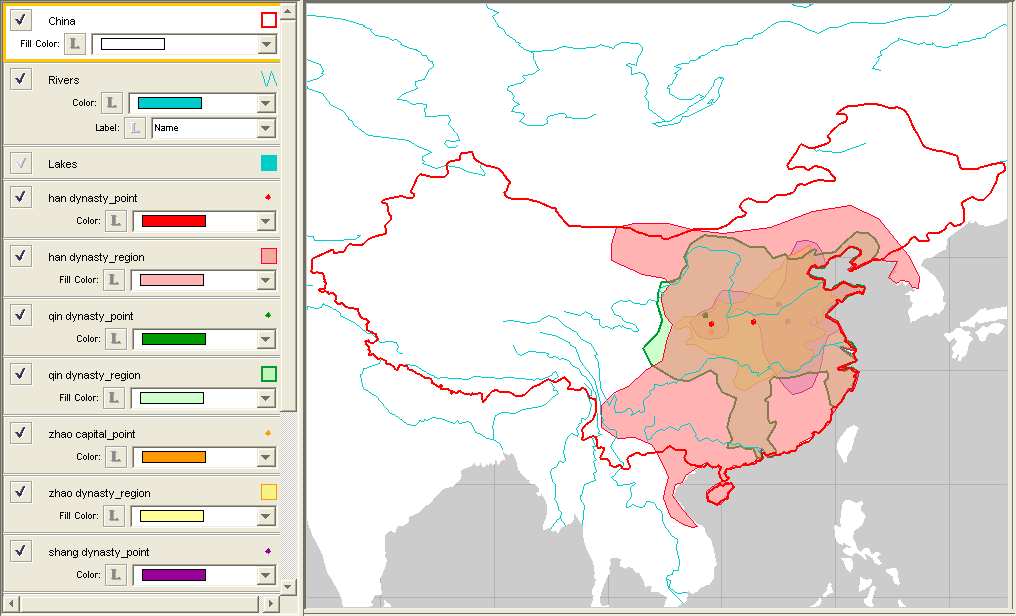Ever wondered about which dynasties ruled Ancient China? Interested in how each dynasty of Ancient China rose and fell? Want to know how Ancient China’s dynasties differed and evolved? Read our guide for more facts and information…
Chinese history spans over 5000 years and much of it has written documentation to support its existence. Ancient China and its’ dynasties are the foundation of this long history; however, these early dynasties was long recorded and remembered through the oral tradition.
Recently these oral traditions have been substantiated by archaeological finds. The Ancient Chinese dynasties, although categorized into neat subsequent time periods in truth often simultaneously existed as new dynasties rose in response to the errors of the old.
Xia dynasty
The Xia dynasty marks the first dynasty of Ancient China; however, until 1959 the existence of this dynasty was heavily questioned. The Xia Dynasty was long considered to be a myth as the only records were in China’s oral history. In 1959 archaeological evidence was found which supported the oral history’s claims. Despite this the existence of the Xia Dynasty is not universally accepted.
The Xia Dynasty as it is told began in 2100 B.C. and continued up to 1800 B.C. This period was the beginning of a class society in Ancient China. Under the Xia dynasty the rulers often acted as Shamans and sought divine guidance. During the time of the Xia Dynasty 17 Emperors came to power. It is told that the Xia Dynasty was overthrown when the last Emperor, Jie, became tyrannical which led to an uprising of the people.
Shang Dynasty
The Shang Dynasty emerged in response to the failings of the Xia dynasty. This dynasty was formally established in 1700 B.C. and continued to 1027 B.C. The Shang dynasty was the first group in Ancient China to use written records developed for the purpose of divination. This documentation suggests that the Shang Dynasty was ruled by 30 Kings and had seven unique capitals.
The afterlife and religion were very important under Shang rule and as such sacrifice, both animal and human, were a large part of Shang culture. Under the Shang Dynasty, Ancient China saw the beginning of commodity exchange, although the society was still predominately based on agriculture and hunting. The Shang dynasty frequently engaged in warfare with the North and like the preceding Xia dynasty was overthrown due to an inability to sustain the people’s support.
Zhou Dynasty
The Zhou dynasty came to power when the Zhou tribe defeated the Shang ruler in war in 1027 B.C. The Zhou would remain in power until 221 B.C. when Ancient China would give way to Imperial China. The Zhou dynasty is divided into the two distinct eras of Western Zhou and Eastern Zhou rule each with a unique royal line and capital. The Zhou were able to defeat the Shang due to their ability to gain the support of frustrated city states as the Zhou believed in diplomacy.
This trend continued upon the Shang’s defeat as the Shang people were allowed to continue to live in the same cities and in fact parts of the Shang lifestyle were adopted. The largest cultural difference between these two dynasties was the strict ban on human sacrifice that the Zhou upheld. The Zhou also are credited with the invention of the mandate of heaven. This may have allowed the Zhou to maintain continuous rule despite a change in royal lineage as an overthrow was attributed to be the will of the Gods.
The dynasties of Ancient China demonstrate the beginnings of the evolution from an agrarian to a commodity based society. The traditions of the dynasties also demonstrate how religion greatly factored into inventions and practices such as writing. The dynasties of Ancient China though, much like the other societies of the past as well as the societies of today depended on the satisfaction of the people in order to maintain power for a significant amount of time as without the support each dynasty was overthrown and soon replaced.





